An older street sign at Court Street and "DEGRAW" Street
Nigh sign across the street now spells it "De Graw" Street
The street sign at the corner of Smith Street and "DEGRAW" Street back in 2008
The same corner with the street sign now spelled "De Graw"
Pardon me for asking, but what is the correct way of spelling the neighborhood street name that divides Carroll Gardens and Cobble Hill ? Is it De Graw or Degraw? I have been confused about that for a while. Obviously, so is the Department of Transportation.A few days ago, I received the following email from reader Andy:
"Hey Katia,
I've noticed that the new street signs on Court and Degraw St now have Degraw spelled as "De Graw" Just wondering if you have any insight? Thanks! "
Of course I grabbed my camera and took a walk to investigate. Sure enough, the new signs and the old signs have different spellings for the same street. On Court Street, the signs attached to the lamp posts are different on opposite sides. Very strange
So how does one spell the name?
It shows up as Degraw Street on Google Maps:
It also shows up as Degraw Street on this old map below, dated 1874.
The origin of the street name may be traced back to the prominent Degrauw family. John W. Degrauw, a New York City merchant had a house built at #219 Clinton Street for his son Abraham J. W. Degrauw. Abraham was a dedicated fireman of Brooklyn Fire Ladder number 4 and ultimately became President of the Brooklyn Fire Department. He lost his life in the line of duty on January 8, 1856 while trying to save the life of a woman during a fire at the Stillwell's Iron & Steel Rail Foundry at 105 Court Street.
To honor his sacrifice, Fire Ladder #4 adopted his name and a street in this, his neighborhood, was named after him. The name however, was changed to Degraw.
That's probably what the Department of Transortation should have done. Or perhaps, we should just change all of the signs to "Degrauw" Street.
Read more

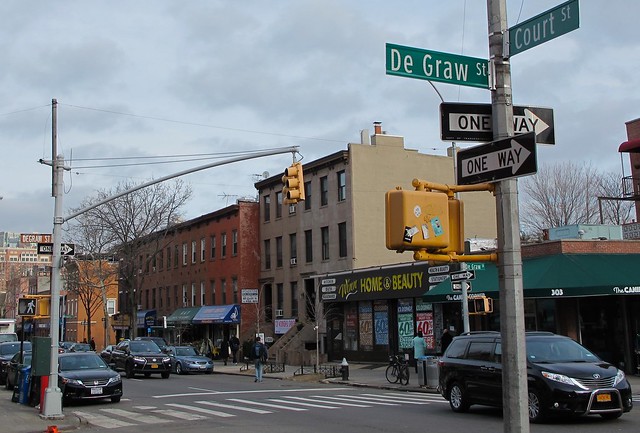
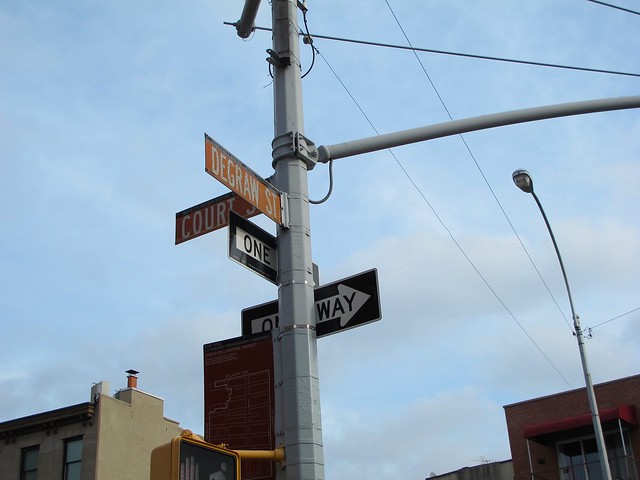

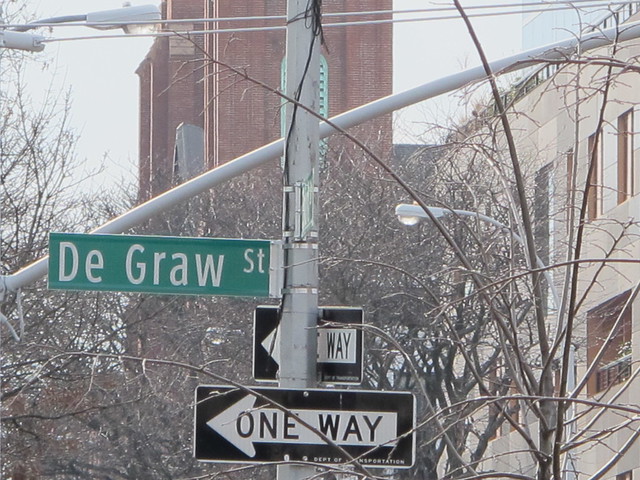

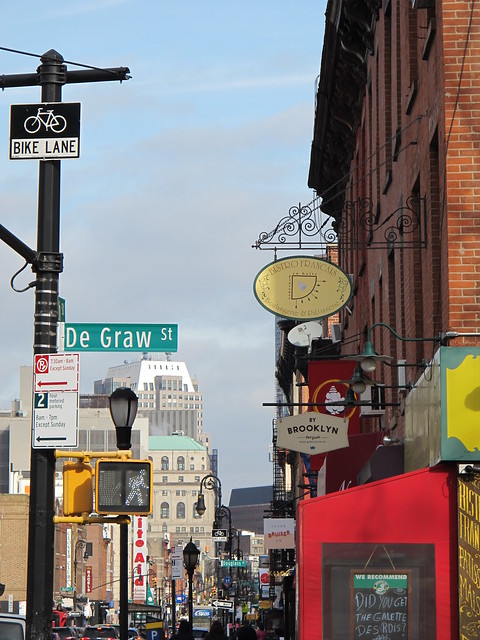
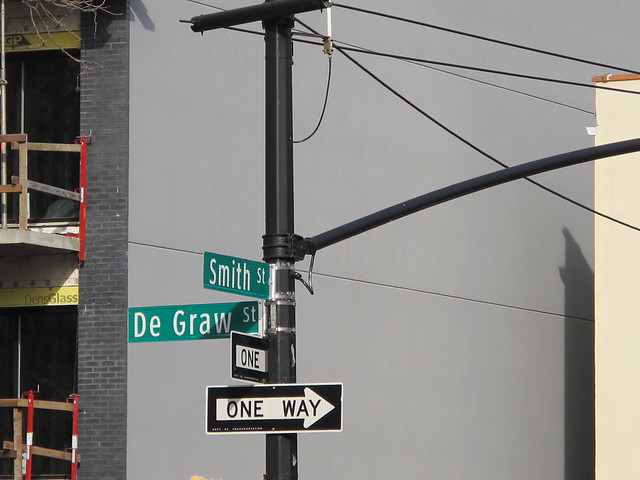

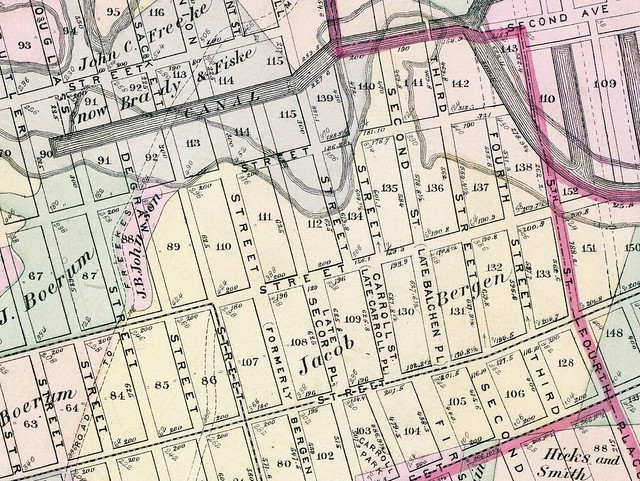












.JPG)
